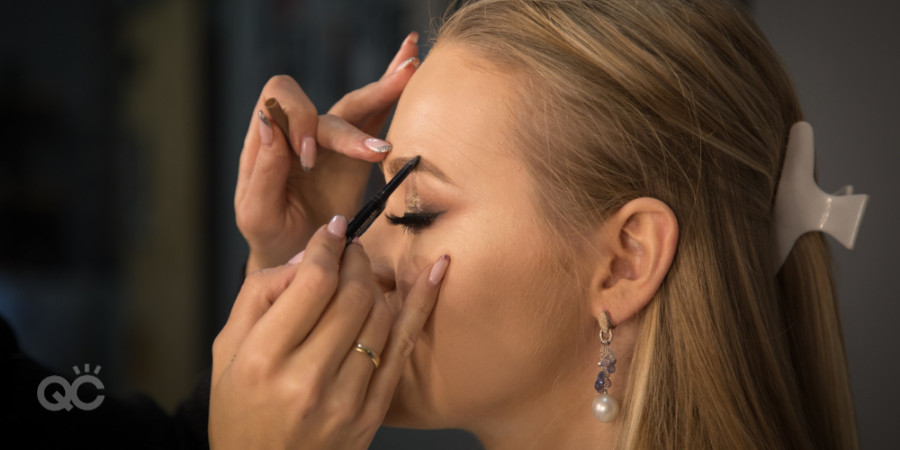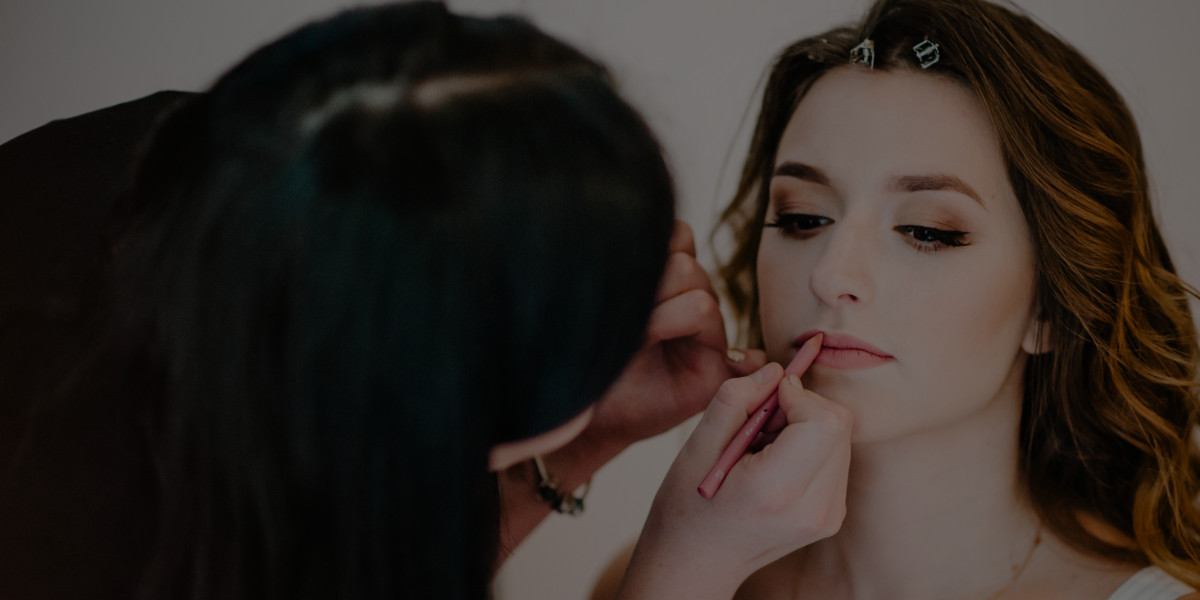Oh no! Someone left you a one-star review! What do you do now?
In the age of social media, customer and client reviews can make or break a business. As a makeup business owner, this pushes you to always offer the very best service. But you won’t always please everyone. Sometimes, a dissatisfied client will leave you a terrible review. If this happens to you, here’s what you should do:
-
Take a deep breath, and don’t act impulsively.
-
Be honest: Is the review warranted? Look at it from your client’s point of view.
-
Respond to the review both publicly and privately. Try to smooth things over. Your goal is not to win an argument.
Let’s break it down.

1: Don’t Be Impulsive
When you first read a negative review of your makeup business, odds are, you’ll have the impulse to defend yourself and your business at all costs.
The worst thing you can do is take the review personally and respond in-kind. This could damage your professional reputation in even worse ways than a bad review can!
When you get a bad makeup artistry review, you should never ever:
- Attack the reviewer personally. No name-calling, no foul language. If you’re catty, it’s a sure fire way of killing your makeup business.
- Give out a client’s personal/private information in a public forum. You might be tempted to write a long rebuttal of the review. There’s nothing implicitly wrong with that (see below), but make sure you never give out information that the client won’t want public. This includes their address, contact information, medical conditions, etc.
- Accuse someone of lying. If the review is unwarranted, address the facts objectively. Someone who leaves an untrue review is looking to draw you into an emotional back-and-forth. Sticking to the facts is an excellent way to shut that down.
- Discriminate in any way. A person’s race, gender, sexual orientation, religion, political beliefs, etc., are none of your business and are always off-limits.
2: Analyze the Review Objectively

Now that you’ve taken a deep breath, sit down and really think about what the client said in the review. Is any of it warranted? Think about it from their point of view and try not to flat out reject what they’re saying in the effort to defend yourself.
Odds are, the negative review will fall into one (or more) of these categories:
- The client was dissatisfied with your work. Reviews that attack your skills as a makeup artist can hurt the most. You did the best job you could. And obviously, you thought the client looked great—otherwise you wouldn’t have let them out of the chair! But these negative reviews are also the easiest ones to make right! So ask yourself: why was the client unhappy?
- Did you check in with them regularly to make sure they were happy with their makeup? Some of your makeup clients might not be completely happy with what you’re doing but won’t complain to your face.
- Did you follow the client’s directions? If a client asks you for a natural look and you ended up doing a dark smoky eye… they’re right to be annoyed.
Were you having a bad day/off your game?
Hey, it happens. We all have days where we don’t put in our best effort. Was the client’s makeup just not up to par? Could you actually have done better? If you have a photo of the client’s finished look, it could be worth sharing it with a trusted friend who’s also a makeup artist. They may be able to provide an honest critique of your work.
The client was dissatisfied with your prices
Setting your prices as a makeup artist can be really tough. You want to be fair, but you also don’t want to sell yourself short. Usually, negative reviews about makeup service fees can be a bit vague. It’s not uncommon to get a one-star review that simply states, “Too expensive!” which isn’t overly helpful. But again, think back to the encounter with your client:

- Did they balk at your initial prices? If they just simply didn’t want to pay you what you’re worth, that’s one thing. But if your prices are out of line for your area, that’s something to address.
- Were they looking for a discount? We’ve all seen epic stories of “choosing beggars” out there. Was this a simple case of someone asking for a discount because “reasons”? This is an easy one to address!
- Did you charge them for services they didn’t want? This one’s probably on you. If you weren’t up-front about your service pricing or the cost of extras (example: false lashes are often an extra charge), then the client has a valid point.
The client had a problem with your professionalism
Clients will have varying expectations about professionalism from their makeup artists. But makeup artists should meet some basic standards for professionalism, from how to dress to meeting etiquette. If you were late for your appointment, had an untidy workspace, or disrespected the client in any way… you need to own those mistakes and promise to do better next time.
Something happened that was out of your control
Always expect the unexpected. Unexpected circumstances can be a real challenge for makeup artists who usually work on tight deadlines. Most clients will understand and work with you to make things right. But if a client was annoyed enough to leave a negative review about the situation, all you can do is address the situation publicly. Most future clients will take that review/response as a one-off that they won’t have to worry about.
3: Respond Publicly (and Maybe Privately)
You always want to leave a public reply to any negative review of your makeup business. Potential clients will see them and know you care about your professional reputation. And they’ll see that you care enough about your clients to want to please them. If the situation warrants it, you can also reply privately with additional information.

Whatever you do, DO NOT reply vaguely. Responding to a negative review with a simple “I will contact you privately about your review” does not give the reader any additional information. The goal of your public reply is to put future client’s minds at ease.
Your response to each and every negative review should contain three elements:
- Acknowledgment/Apology
- Explanation
- Resolution
1: Acknowledgement/Apology.
You want to start off any reply by acknowledging the client’s complaint. If the review was warranted, apologize for their poor experience. If the review was unfounded, you can do the old “I’m sorry you feel that way” apology.
2: Explanation
This will be the longest section of your response. If the review was warranted, you’ll want to take some time giving details on exactly what happened and/or what you think went wrong and how you could have handled it better. If the review was unfounded, you can explain exactly why the review is unfounded.
3: Resolution
The “resolution” is how you’ll wrap up your reply so that it doesn’t become a public back-and-forth with the client. If the review was warranted, you can offer to make amends. Not every client will want to take you up on your offer. But extending an olive branch makes you look good to anyone who reads the review. If the review was unfounded, you can simply end the conversation with a polite “thank you for your time”.

Example for a warranted bad review:
“[Apology] Hi [name], I’m so sorry you were unhappy with the makeup look we did on you. We always strive to do our very best work and obviously, we missed the mark here.
[Explanation] While I think the makeup looked amazing on you, people have different tastes. Makeup can always be adjusted, but we need to know what you like and don’t like so that we can make appropriate changes. I realize that not everyone would be comfortable telling their makeup artist that, and I should have checked-in with you more during your application to make sure you were happy with the final product.
[Resolution] If you’re willing to give me another chance, I’d love to invite you back to the makeup studio. I would be happy to try another look now that I have a better understanding of the type of look you were going for. I’ll follow up with you in a private message to see if we can set this up.”
Example for an unfounded bad review:
“[acknowledgment] Hi [name], I’m sorry you’re upset about our pricing structure.
[explanation] As I explained to you when you first contacted me about our makeup services, the prices I have listed on my website are the fair market price for makeup artists in this area. As I explained, my prices cover my time, travel time, and the makeup used, etc. I cannot offer discounts to everyone who asks for one. I’m sure you can understand this. You’re correct that you can get less expensive makeup services from uncertified individuals or less experienced individuals, and those are always viable options if you’re on a budget.
[resolution] I thank you again for considering us and wish you all the best.”

[BONUS] 4: Encourage Good Reviews!
Hopefully, you make an effort to have satisfied clients leave positive reviews of your makeup business/services. Most clients won’t leave good reviews unless you specifically ask them to. So ask! Every makeup business will have a blemish or two in their reviews. A healthy amount of positive reviews will help balance them out.

i read your article’s and it’s really good. you done such a amazing job. But most of the points or important tips are not written in this articles. so i m shocked.
https://innisglow.com/makeup/create-aesthetic-look-with-minimalist-makeup-brands-and-minimalist-makeup-essentials/ provides best tips or tricks and information. other hand it’s also provides best cosmetic or skin care products for daily use. so don’t waste your time for any kind of products. just click! And i hoped you may impressed about these products or informative articles (100% result).
great!
great
Very informative. Its really help for me to handle nagtive reviews for my business. I really follow these steps. Thanks for sharing.
nice artical
Very well explained and its very difficult specially in India to handle clients. Really liked how you have simplied and explained the issue. Will look forward to your posts in future
Thank you so much for reading, we really appreciate it! We’re so glad you found this article helpful. xx
All the best,
The QC Team
thanks for your share.
Thanks so much for reading, we really appreciate it! 🙂
All the best,
The QC Team
Informative post! This is a great share thank you
Hi there, thanks so much for taking the time to read our article and leave a comment. We’re happy to hear that you found this post to be informative. 🙂 Out of curiosity, which tip discussed in this article did you find the most beneficial, when it comes to handling negative reviews for one’s makeup business? We’d love to know!
All the best,
The QC Team
You’re doing a great job Man, Keep it up.
Impressive! Thanks for sharing this.
Thank you so much for the kind words, and for taking the time to read our article. We’re happy to hear that you found the info in this post so beneficial! 😀
All the best,
The QC Team
Thank you for sharing about How to Handle Negative Reviews of Your Makeup Business and informative article. Thanks for sharing these ideas with us.
Hi there, you’re very welcome! Thank YOU for taking the time to not only read our article, but for leaving such a kind comment! x Do YOU have any any additional tips for how to handle negative reviews for a makeup business? If so, we’d love to hear them! <3
All the best,
The QC Team